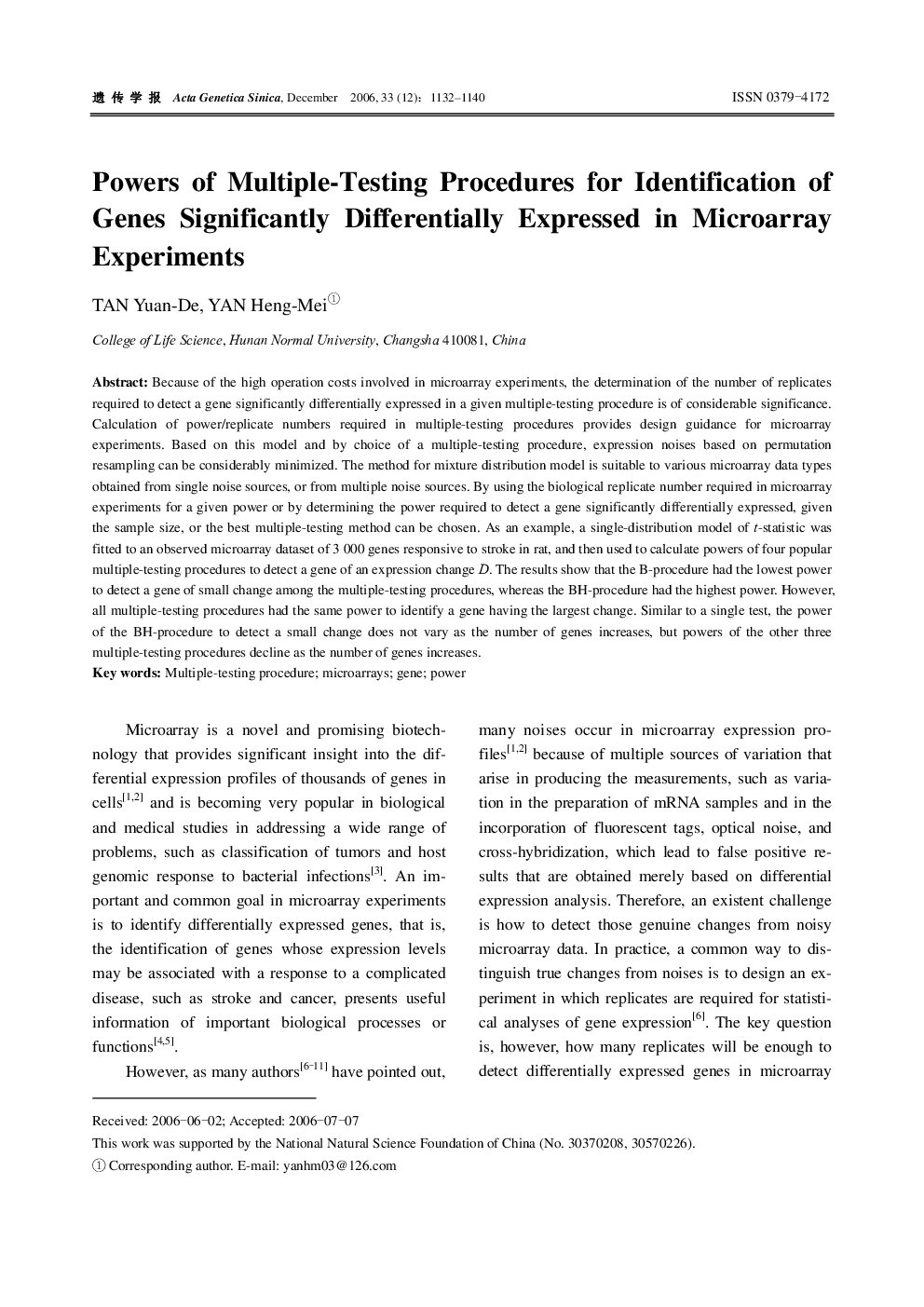| Article ID | Journal | Published Year | Pages | File Type |
|---|---|---|---|---|
| 2811181 | Acta Genetica Sinica | 2006 | 9 Pages |
Because of the high operation costs involved in microarray experiments, the determination of the number of replicates required to detect a gene significantly differentially expressed in a given multiple-testing procedure is of considerable significance. Calculation of power/replicate numbers required in multiple-testing procedures provides design guidance for microarray experiments. Based on this model and by choice of a multiple-testing procedure, expression noises based on permutation resampling can be considerably minimized. The method for mixture distribution model is suitable to various microarray data types obtained from single noise sources, or from multiple noise sources. By using the biological replicate number required in microarray experiments for a given power or by determining the power required to detect a gene significantly differentially expressed, given the sample size, or the best multiple-testing method can be chosen. As an example, a single-distribution model of t-statistic was fitted to an observed microarray dataset of 3 000 genes responsive to stroke in rat, and then used to calculate powers of four popular multiple-testing procedures to detect a gene of an expression change D. The results show that the B-procedure had the lowest power to detect a gene of small change among the multiple-testing procedures, whereas the BH-procedure had the highest power. However, all multiple-testing procedures had the same power to identify a gene having the largest change. Similar to a single test, the power of the BH-procedure to detect a small change does not vary as the number of genes increases, but powers of the other three multiple-testing procedures decline as the number of genes increases.
